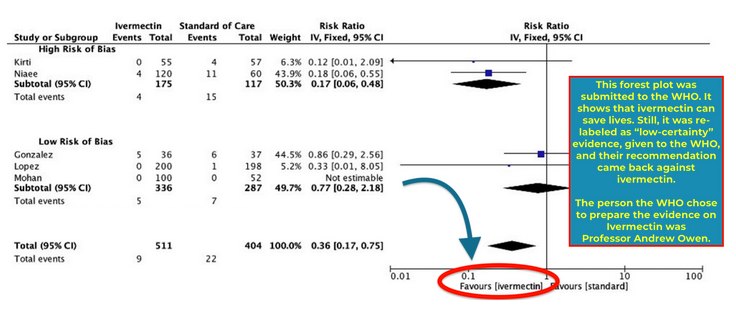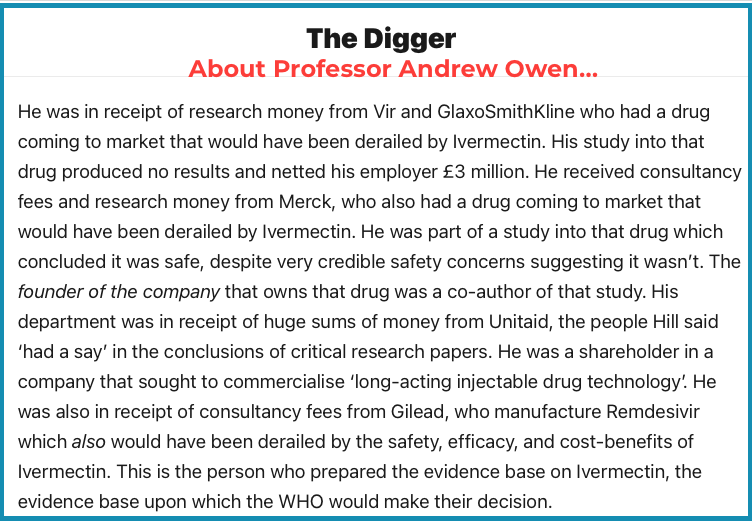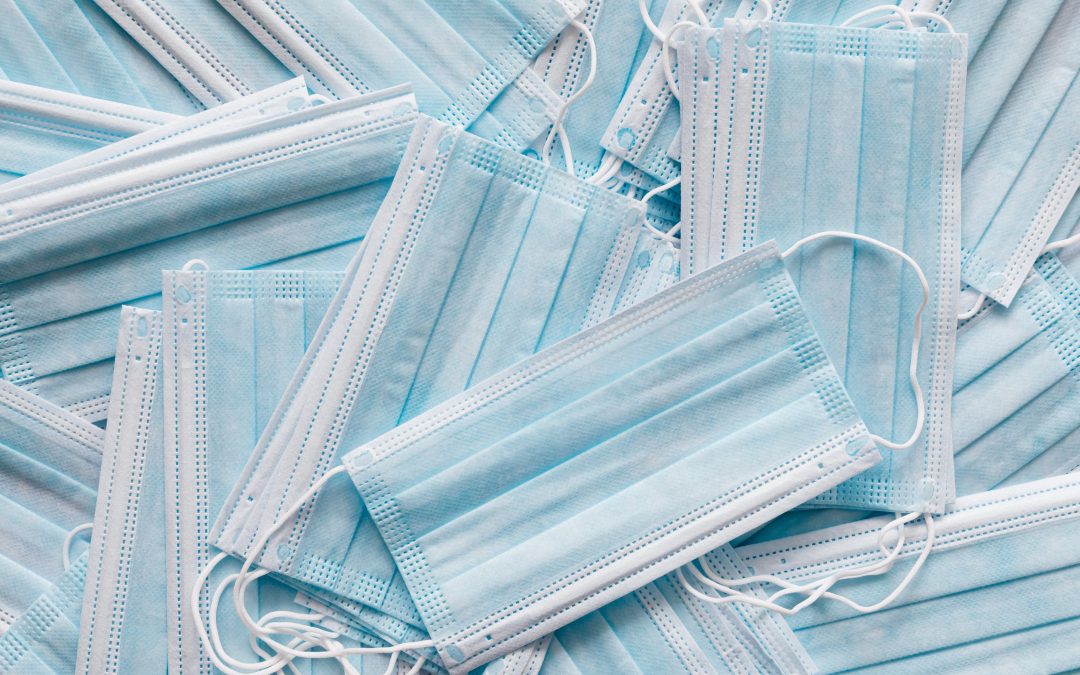A Further 83 Compelling References
We have provided the following information to assist you in your research.
1 T Jacobson, J Kler, et al. Direct human health risks of increased atmospheric carbon dioxide. Nat Sustain. 201 (8). 691-701. https://www.nature.com/articles/s41893-019-0323-1
2 D Sin, S Man, et al. Arterial carbon dioxide tension on admission as a marker of in-hospital mortality in community-acquired pneumonia. Am J Med. Feb 1 2005. 118 (2). 145-150. https://doi.org/10.1016/j.amjmed.2004.10.014 https://www.amjmed.com/article/S0002-9343(04)00680-1/fulltext
3 P Murtagh, V Giubergia, et al. Lower respiratory infections by adenovirus in children. Clinical features and ris factors for bronchiolitis obliterans and mortality. Ped Pulm. 44. 450-456. https://doi.org/10.1002/ppul.20984 https://www.nature.com/articles/s41598-018-32008-x#ref-CR10
4 N Nin, A Muriel et al. Severe hypercapnia and outcome of mechanically ventilated patients with moderate or severe acute respiratory distress syndrome. Int Care Med 43. 200-208. https://www.ncbi.nlm.nih.gov/pmc/articles/PMC5630225/
5 K Moser, E Shibel, et al. Acute respiratory failure in obstructive lung disease. JAMA. Aug 13 1973. 225. 705-7
https://jamanetwork.com/journals/jama/article-abstract/349944
6 B Chandrasekaran, S Fernandes. Exercise with facemask; Are we handling a devil’s sword? – A physiological hypothesis. Nov 2020. 144 (110002). doi: 10.1016/j.mehy.2020.110002 https://www.ncbi.nlm.nih.gov/pmc/articles/PMC7306735/#b0135
https://pubmed.ncbi.nlm.nih.gov/32590322/
7 M Joyner, D Casey. Regulation of increased blood flow (hyperemia) to muscles during exercise: a hierarchy of competing physiological needs. Physiol Rev. Apr 2015. 95 (2). 549-601. doi: 10.1152/physrev.00035.2013. https://pubmed.ncbi.nlm.nih.gov/25834232/
8 Carbon Dioxide Health Hazard Information Sheet. Food Safety Inspection Service, US Department of Agriculture
https://fsis-dev.fsis.usda.gov/sites/default/files/media_file/2020-08/Carbon-Dioxide.pdf
9 Z Zhaoshi. Potential risks when some special people wear masks. No. 1 Dept of Neurology, The Third Hospital Jilin University. Apr 18 2020. https://jamanetwork.com/journals/jama/fullarticle/2764955
11 Occupational Chemical Database: Carbon Dioxide. US Department of Labor, Occupational Safety and Health Administration. https://www.osha.gov/chemicaldata/chemResult.html?RecNo=183
12 Carbon Dioxide Health Hazard Information Sheet. Food Safety Inspection Service, US Department of Agriculture.
https://www.fsis.usda.gov/wps/wcm/connect/bf97edac-77be-4442-aea4-9d2615f376e0/Carbon- Dioxide.pdf?MOD=AJPERES
13 Acid-base physiology, 4.4 Respiratory acidosis-Metabolic effects.
https://www.anaesthesiamcq.com/AcidBaseBook/ab4_4.php
14 J Williams, J Krah, et al. The physiological burden of prolonged PPE use on healthcare workers during long shifts. US Centers for Disease Control and Prevention. Jun 10 2020. https://blogs.cdc.gov/niosh-science- blog/2020/06/10/ppe-burden/ (link is now invalid)
15 R Roberge, A Coca, et al. Physiological impact of the N95 filtering facepiece respirator on healthcare workers. Respir Care. May 2010. 55 (5). 569-577. https://pubmed.ncbi.nlm.nih.gov/20420727/
16 M Shigemura, e Lecuona et al. Effects of hypercapnia on the lung. J Physiol. Jan3 2017. 595 (8).
https://doi.org/10.1113/JP273781
https://physoc.onlinelibrary.wiley.com/doi/full/10.1113/JP273781
17 C Vohwinkel, E Lecuona et al. Elevated CO(2) levels cause mitochondrial dysfunction and impair cell proliferation. J Biol Chem. Oct 28 2011. 286 (43). 37067-76. doi: 10.1074/jbc.M111.290056. https://pubmed.ncbi.nlm.nih.gov/21903582/
18 C Kempeneers, C Seaton, et al. Ciliary functional analysis: beating a path towards standardization. Pediatr Pulmonol. Oct 2019. 54 (10). 1627-1638.
https://doi.org/10.1002/ppul.24439
https://pubmed.ncbi.nlm.nih.gov/31313529/
19 E Laserna, O Sibila, et al. Hypocapnia and hypercapnia are predictors for ICU admission and mortality in hospitalized patients with community-acquired pneumonia. Chest. Nove 2012. 142 (5): 1193-1199. doi: 10.1378/chest.12-0576
https://pubmed.ncbi.nlm.nih.gov/22677348/
20 A Lardner. The effects of extracellular pH on immune function. J Leukoc Biol. Apr 2001. 69 (4). 522-30
https://pubmed.ncbi.nlm.nih.gov/11310837/
21 C Lang, P Dong, et al. Effect of CO2 on LPS-induced cytokine responses in rats alveolar macrophages. Am J Physiol Lung Cell Mol Physiol. Jul 2005. 289 (1). L96-L103. doi: 10.1152/ajplung.00394.2004 https://pubmed.ncbi.nlm.nih.gov/15778246/
22 S Casalino-Matsuda, N Wang, et al. Hypercapnia alters expression of immune response, nucleosome assembly and lipid metabolism genes in differentiated human bronchial epithelial cells. Sep 10 2018. Sci Rep. 13508. https://www.nature.com/articles/s41598-018-32008-x
23 D O’Croinin, et al. Sustained hypercapnic acidosis during pulmonary infection increases bacterial load and worsens lung injury. Crit Care Med. 36. 2128-2135. https://doi.org/10.1097/CCM.0b013e31817d1b59 https://pubmed.ncbi.nlm.nih.gov/18552698/
24 B Borovoy, C Huber, Maria Crisler. Masks, false safety and real dangers, Part 2: Microbial challenges from masks. Oct 2020. https://PDMJ.org
25 D Morens, J Taubenberger, et al. Predominant role of bacterial pneumonia as a cause of death in pandemic influenza: implications for pandemic influenza preparedness. J Inf Dis. Octo 1 2008. 198 (7). 962-970. https://doi.org/10.1086/591708. https://academic.oup.com/jid/article/198/7/962/2192118
26 J Williams, J Cichowitz, et al. The physiological burden of prolonged PPE use on healthcare workers during long shifts. US Centers for Disease Control (CDC) National Institute of Occupational Safety and Health (NIOSH) Science Blog. Jun 10 2020.
https://blogs.cdc.gov/niosh-science-blog/2020/06/10/ppe-burden/
27 D Harmening. Clinical Hematology and Fundamentals of Hemostasis, 4 th ed. Davis Company. 2002. 349. 28 L Costanzo. Physiology. W B Saunders Company. 1998. 286-287.
29 A Yartsev. Pharmacology of carbon dioxide. Deranged Physiology.
https://derangedphysiology.com/main/cicm- primary-exam/required-reading/respiratory-system/Chapter%20311/pharmacology-carbon-dioxide
30 A Voulgaris, O Marrone, et al. Chronic kidney disease in patients with obstructive sleep apnea. A narrative review. Sleep Med Rev. 2019. 10 (47). 74-89. https://pubmed.ncbi.nlm.nih.gov/31376590/
31 Medicine Libre Texts. 6.4: Metabolic effects. Aug 13 2020.
https://med.libretexts.org/Bookshelves/Anatomy_and_Physiology/Book%3A_Acid- base_Physiology_(Brandis)/06%3A_Respiratory_Acidosis/6.04%3A_Metabolic_Effects
32 C Smith, J Whitelaw, et al. Carbon dioxide rebreathing in respiratory protective devices: influence of speech and wor rate in full-face masks. Ergonomics. 2013. 56 (5): 781-790. https://pubmed.ncbi.nlm.nih.gov/23514282/
33 D Stevens, B Jackson, et al. The impact of obstructive sleep apnoea on balance, gait and falls risk: a narrative review of the literature. J Gerontol A Biol Sci Med Sci. Feb 2020. 10glaa014. Online ahead of print. https://pubmed.ncbi.nlm.nih.gov/32039438/
34 E Lim, R Seet, etal. Headaches and the N-95 face-mask amongst healthcare providers. Acta Neurol Scand Mar 2006. 113 (3). 199-202. doi: 10.1111/j.1600-0404.2005.00560.x https://pubmed.ncbi.nlm.nih.gov/16441251/
35 N Fabregas, J Fernández-Candil. Hypercapnia. Dec 2016. In book Complications in Neuroanesthesia. 157-168. https://doi.org/10.1016/B978-0-12-804075-1.00020-1 https://www.sciencedirect.com/science/article/pii/B9780128040751000201?via%3Dihub
36 J Sayers, R Smith, et al. Effects of carbon dioxide on mental performance. J Appl Physiol. Jul 1985. 63 (1). 25- 30. doi: 10.1152/jappl.1987.63.1.25 https://pubmed.ncbi.nlm.nih.gov/3114218/
37 U Satish, M Mendell, et al. Is CO2 an indoor pollutant? Direct effects of low-to-moderate CO2 concentrations on human decision-making performance. Environ Health Perspect. Dec 2012. 120 (12). 1671-1677. https://dx.doi.org/10.1289%2Fehp.1104789
https://www.ncbi.nlm.nih.gov/pmc/articles/PMC3548274/
38 Y Yang, C Sun, et al. The effect of moderately increased CO2 concentration on perception of coherent motion. Aviat Space Environ Med. Mar 1997. 68 (3). 187-191. https://pubmed.ncbi.nlm.nih.gov/9056025/
39 K Azuma, N Kagi, et al. Effects of low-level inhalation exposure to carbon dioxide in indoor environments: A short review on human health and psychomotor performance. Environ Int. Dec 2018. 121 (Pt1). 51-56. doi: 10.1016/j.envint.2018.08.059 https://pubmed.ncbi.nlm.nih.gov/30172928/
40 A Beder, U Buyukkocak, et al. Preliminary report on surgical mask induced deoxygenation during major surgery. Neurocirugia 2008. 19. 121-126. http://scielo.isciii.es/pdf/neuro/v19n2/3.pdf
41 T Kao, K Huang, et al. The physiological impact of wearing an N95 mask during hemodialysis as a precaution against SARS in patients with end-stage renal disease. J Formos Med Assoc. Aug 2004. 103 (8). 624-628. https://pubmed.ncbi.nlm.nih.gov/15340662/
42 Bureau of Labor Statistics. News Release. USDL-11-1247. National Census of Fatal Occupational Injuries in 2010. Preliminary Results. Aug 25 2011. https://scholar.google.com/scholar?cluster=5019350129886890079&hl=en&as_sdt=805&sciodt=0,3
43 D Spelce, R McKay, et al. Respiratory protection for oxygen deficient atmospheres. J Int Soc Respir Prot. 2016. 33 (2). https://www.ncbi.nlm.nih.gov/pmc/articles/PMC7183576/
44 K Fedor. Noninvasive respiratory support in infants and children. Respiratory Care. Jun 2017. Vol 62 (6). 699- 717. doi: 10.4187/respcare.05244 https://pubmed.ncbi.nlm.nih.gov/28546373/
45 J Weinstein, J Smith. Pediatric BIPAP. J Emer Med Svcs. Sep 19 2019.
46 US Department of Labor, Occupational Safety & Health Administration. Confined or enclosed spaces and other dangerous atmospheres >> Oxygen deficient or oxygen enriched atmospheres.
https://www.osha.gov/SLTC/etools/shipyard/shiprepair/confinedspace/oxygendeficient.html
47 Z Zhaoshi. Potential risks when some special people wear masks. No. 1 Dept of Neurology, The Third Hospital of Jilin University. Apr 18 2020. https://jamanetwork.com/journals/jama/fullarticle/2764955
48 C Luther. OSHA oxygen concentration standards. Sep 15 2020. https://work.chron.com/osha-oxygen- concentration-standards-15047.html
49 D Spelce, R McKay, et al. Respiratory protection for oxygen deficient atmospheres. J Int Soc Respir Prot. 2016. 33 (2). https://www.ncbi.nlm.nih.gov/pmc/articles/PMC7183576/
50 J Henry. Clinical Diagnosis and Management by Laboratory Methods. 19th ed. WB Saunders Co. © 1996. P. 86.
51 T Carbonell, R Rama. Respiratory hypoxia and oxidative stress in the brain.Is the endogenous erythropoietin an antioxidant? Current Chem Biol. 2009. 3 (3). https://doi.org/10.2174/2212796810903030238 https://www.eurekaselect.com/93407/article/respiratory-hypoxia-and-oxidative-stress-brain-endogenous- erythropoietin-antioxidant
52 K Blomgren, H Hagberg. Free radicals, mitochondria and hypoxia-ischemia in the developing brain. Free radic Biol Med. Feb 1 2006. 40 (3). 388-397. https://pubmed.ncbi.nlm.nih.gov/16443153/
53 G Padhy, A Gangwar, et al. Plasma kallikrein-bradykinin pathway promotes circulatory nitric oxide metabolite availability during hypoxia. Nitric Oxide. Vol 55-56. May-June 2016. 36-44. https://www.sciencedirect.com/science/article/abs/pii/S1089860316300155
54 J Greenwod. Mechanisms of blood-brain barrier breakdown. Neuroradiology. 1991. 33 (2): 95-100. doi: 10.1007/BF00588242. https://pubmed.ncbi.nlm.nih.gov/2046916/
55 M Griesz-Brisson. Interview. Technocracy News.
https://www.technocracy.news/german-neurologist-on-face-masks-oxygen-deprivation-causes-permanent-neurological-damage/
56 C St. Croix, B Morgan, et al. Fatiguing inspiratory muscle work causes reflex sympathetic activation in humans. J Physiol. Dec 1 2000. 529 Pt 2 (Pt 2). 493-504. doi: 10.1111/j.1469-7793.2000.00493.x. https://pubmed.ncbi.nlm.nih.gov/11101657/
57 V Melnikov, V Divert, et al. Baseline values of cardiovascular and respiratory parameters predict response to acute hypoxia in young healthy men. Physiol Res. 2017. 66 (3). 467-479.
https://pubmed.ncbi.nlm.nih.gov/28248531/
58 J Crawford, T Isbell, et al. Hypoxia, red blood cells, and nitrite regulate NO-dependent hypoxic vasodilation. Blood. Jan 15 2006. 107 (2). 566-574. https://dx.doi.org/10.1182%2Fblood-2005-07-2668 https://www.ncbi.nlm.nih.gov/pmc/articles/PMC1895612/
59 J Henry. Clinical Diagnosis and Management by Laboratory Methods. 19th ed. WB Saunders Co. © 1996. P. 599.
60 MedGen. Erythroid hyperplasia. https://www.ncbi.nlm.nih.gov/medgen/4536#rdis_1634824
61 D Harmening. Clinical Hematology and Fundamentals of Hemostasis., 4 th ed. Davis Company. 2002. 348-349.
62 E Cummins, D Crean. Hypoxia and inflammatory bowel disease. Microbes and Infection. 19 (3). March 2017. 210-221. https://www.sciencedirect.com/science/article/abs/pii/S1286457916301319?via%3Dihub
63 N Zeitouni, S Chotikatum, et al. The impact of hypoxia on intestinal epithelial cell functions: consequences for invasion by bacterial pathogens. Mol Cell Ped. 2016. 14. https://doi.org/10.1186/s40348-016-0041-y https://molcellped.springeropen.com/articles/10.1186/s40348-016-0041-y
64 W Zhu. Should, and how can, exercise be done during a coronavirus outbreak? An interview with Dr. Jeffrey A Woods. J Sport Health Sci. Mar 2020. 9 (2). 105-107. doi: 10.1016/j.jshs.2020.01.005. https://pubmed.ncbi.nlm.nih.gov/32099717/
65 M Hogan, R Cox, et al. Lactate accumulation during incremental exercise with varied inspired oxygen fractions. J Appl Physiol Respir Environ Exerc Physiol. Oct 1983. 55 (4). 1134-1140. doi: 10.1152/jappl.1983.55.4.1134 https://pubmed.ncbi.nlm.nih.gov/6629944/
66 O Warburg. On the origin of cancer cells. Science. Feb 24 1956. 123 (3191). DOI:10.1126/science.123.3191.309. https://science.sciencemag.org/content/123/3191/309
67 O Warburg. On the origin of cancer cells. Science. Feb 24 1956. 123 (3191).
https://www.jstor.org/stable/1750066?seq=1
68 A Chambers, S Matosevic. Immunometabolic dysfunction of natural killer cells mediated by the hypoxia-CD73 axis in solid tumors. Front Mol Biosci. 2019. 6 (60). Jul 24 2019. https://dx.doi.org/10.3389%2Ffmolb.2019.00060 https://www.ncbi.nlm.nih.gov/pmc/articles/PMC6668567/
69 G Crittenden. Is your mask giving you lung cancer? Oct 21 2020.
https://neverb4.net/is-your-mask-giving-you-lung-cancer/
70 M Chua, W Cheng, et al. Face masks in the new COVID-19 normal: materials, testing and perspectives. Research (Wash DC) Aug 7 2020. https://dx.doi.org/10.34133%2F2020%2F7286735 https://www.ncbi.nlm.nih.gov/pmc/articles/PMC7429109/
71 Solvay. Material for Covid-19 PPE and medical equipment: N-95 masks.
https://www.solvay.com/en/chemical-categories/specialty-polymers/healthcare/medical-equipment-emergency-production/n95-masks
72 M Chua, W Cheng, et al. Face masks in the new COVID-19 normal: materials, testing and perspectives. Research (Wash DC) Aug 7 2020. https://dx.doi.org/10.34133%2F2020%2F7286735
https://www.ncbi.nlm.nih.gov/pmc/articles/PMC7429109/
73 P Pierozan, F Jemeren, et al. Perfluorooctanoic acid (PFOA) exposure promotes proliferation, migration and invasion potential in human breast epithelial cells. Arch Toxicol. 2018. (92 (5). 1729-1739. Mar 3 2018. https://dx.doi.org/10.1007%2Fs00204-018-2181-4
https://www.ncbi.nlm.nih.gov/pmc/articles/PMC5962621/
74 K Steenland, T Fletcher, et al. Epidemiologic evidence on the health effects of perfluorooctanoic acid (PFOA). Environ Health Perspect. Aug 2010. 118 (8): 1100-1108. https://dx.doi.org/10.1289%2Fehp.0901827 https://www.ncbi.nlm.nih.gov/pmc/articles/PMC2920088/
75 D Lukashev, B Klebanov. Cutting edge: Hypoxia-inducible factor 1alpha and its activation- inducible short isoform I.1 negatively regulate functions of CD4+ and CD8+ T lymphocytes. J Immun. Oct 15 2006. 177 (8). 4962 – 4965. DOI: https://doi.org/10.4049/jimmunol.177.8.4962
https://www.jimmunol.org/content/177/8/4962
76 A Sant, A McMichael. Revealing the role of CD-4+ T cells in viral immunity. J Exp Med. Jul 30 2012. 209 (8).
https://dx.doi.org/10.1084%2Fjem.20121517
https://www.ncbi.nlm.nih.gov/pmc/articles/PMC3420330/
77 B Borovoy, C Huber, Maria Crisler. Masks, false safety and real dangers, Part 2: Microbial challenges from masks. Oct 2020. https://PDMJ.org
78 J Lan, Z Song, et al. Research letter: Skin damage among health care workers managing coronavirus disease- 2019. Mar 9 2020. J Am Acad Dermatol. 82 (5). 1215-1216.
https://www.jaad.org/article/S0190-9622(20)30392-3/pdf
79 US Food and Drug Administration. Definition of a medical device. Section 201(h).
https://www.fda.gov/media/131268/download
80 US Food and Drug Administration. Medical device overview.
https://www.fda.gov/industry/regulated-products/medical-device- overview#What%20is%20a%20medical%20device
81 Us Food and Drug Administration. “Who can write a prescription for a medical device?”
https://www.fda.gov/medical-devices/home-use-devices/frequently-asked-questions-about-home-use-devices#5
82 E Sinkule, J Powell, et al. Evaluation of N95 respirator use with a surgical mask cover: effects on breathing resistance and inhaled carbon dioxide. [Table 4] Ann Occup Hygiene. Oct 29 2012. 57 (3). 384-398.
https://doi.org/10.1093/annhyg/mes068
https://academic.oup.com/annweh/article/57/3/384/230992
83 Z Zhaoshi. Potential risks when some special people wear masks. No. 1 Dept of Neurology, The Third Hospital of Jilin University. Apr 18 2020. https://jamanetwork.com/journals/jama/fullarticle/2764955




